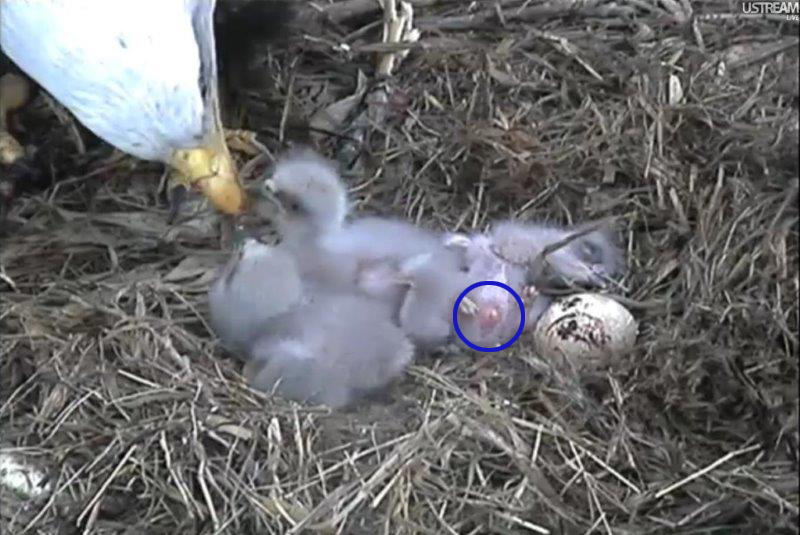Results
Nice try! You are welcome to play as many times as you like. Keep watching to learn more about the lives of bald eagles!

#1. A hatchling eaglet has a temporary belly button. What is it called?
The answer is ‘Yolk Sac Scar’. Shortly before hatch begins, an eaglet absorbs whatever yolk remains in the egg through its open body cavity. Its body cavity seals shortly before hatch, leaving behind a scar to mark the spot!

#2. Eagles have a special pouch used for storing and moistening food. What is it called?
The correct answer is ‘Crop’! An eagle’s crop allows it to store more food than it can digest at one time. As an eagle needs food, it passes it from its crop down into its stomach. Some people also call them ‘Snack Packs’!

#3. Can bald eagles swim?
They can! Bald eagles use their wings in a butterfly motion to ‘flap’ towards a dry spot: a muskrat or beaver den, shore, or even floating debris.

#4. Eagles have tiny projections on the underside of their toes that aid in catching prey. What are the projections called?
The correct answer is ‘Spicules’! Talons and a hallux claw aid in catching and holding prey, but they aren’t spicules.

#5. How many components are there in bird droppings?
Three: feces, urates, and clear liquid! Most undigestible prey remains are pressed into a pellet and expelled through an eagle’s mouth. To learn more about an eagle’s pooping process, follow this link: https://www.raptorresource.org/2020/03/24/oh-poop-shoot/

#6. True or False: Bald eagles cannot roll their eyes from side to side.
An eagle’s large eyes take up so much room in its skull that they don’t have space for the small muscles that allow humans and many other animals to roll their eyes from side to side. Eagles turn their heads instead of rolling their eyes. You can learn more about eagle vision here: https://www.raptorresource.org/2017/11/19/eagle-eyes/

#7. In English, an Eagle sneeze is called a/an:
An eagle sneeze is referred to as a ‘Snite!’ Achoo is the English onomatopoeia for a human sneeze, and Hapsu is Turkish for the same! Every language has their own noise for a sneeze.

#8. Are bald eagles altricial or precocial birds?
Bald eagles are altricial. According to Stanford University, altricial birds hatch with their eyes closed, are incapable of departing from the nest, and are fed by their parents. Our eaglets won’t leave the nest until they are 75-80 days old, and might not hunt for themselves until they are 85 to 90 days old!

#9. What are wing and tail feathers called?
Wingfeathers are remiges and tailfeathers are retrices. Flaps and rudders are found on airplanes, and primaries and secondaries are two types of feathers.

#10. True or false: An egg will die if it isn’t constantly incubated.
While eggs have to be incubated most of the time, adult eagles may have to get off them to let them cool down, air out, or dry off. The optimal temperature for Bald Eagle eggs is around 99 degrees. Adult bald eagles have a body temperature of around 105 degrees, which gives them heat to spare!